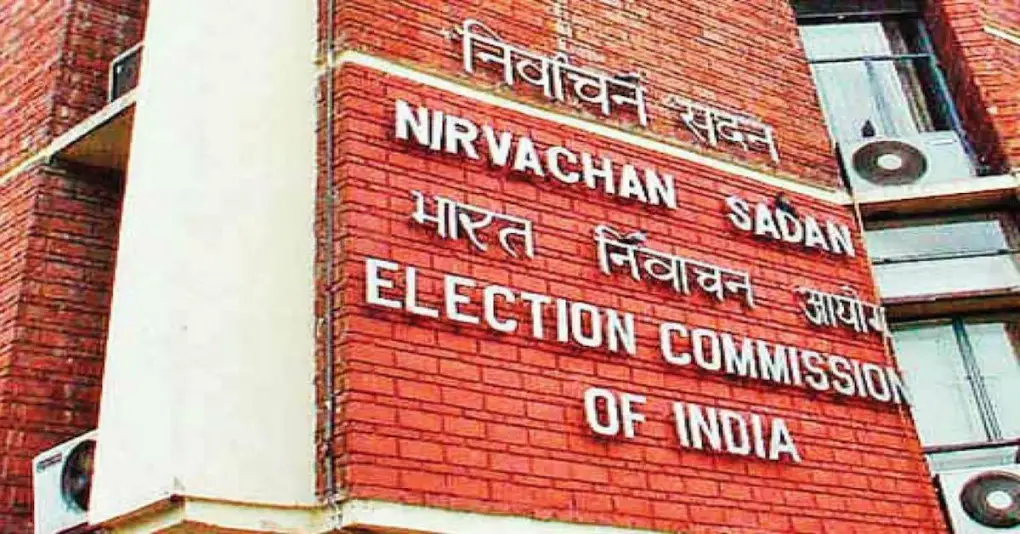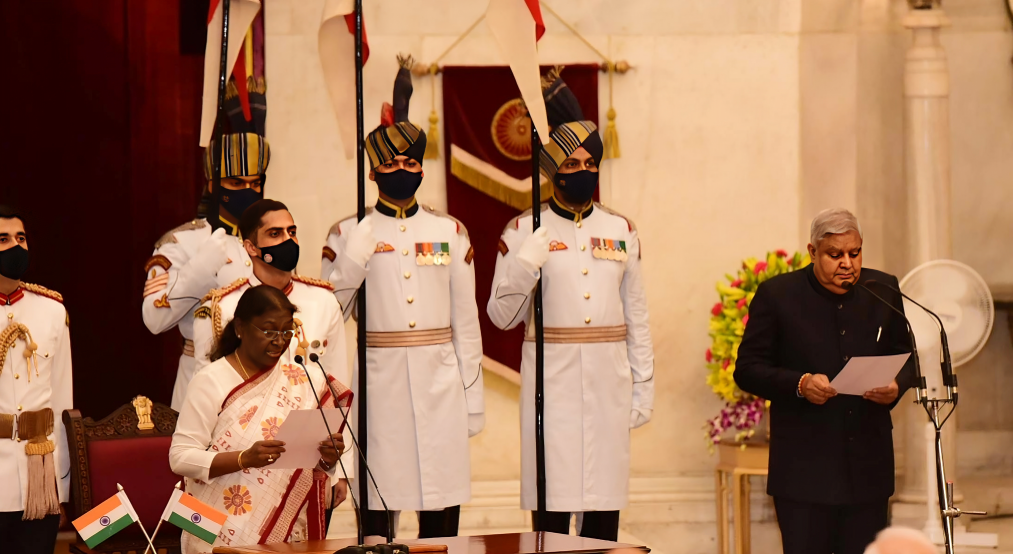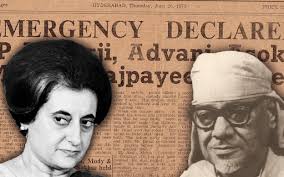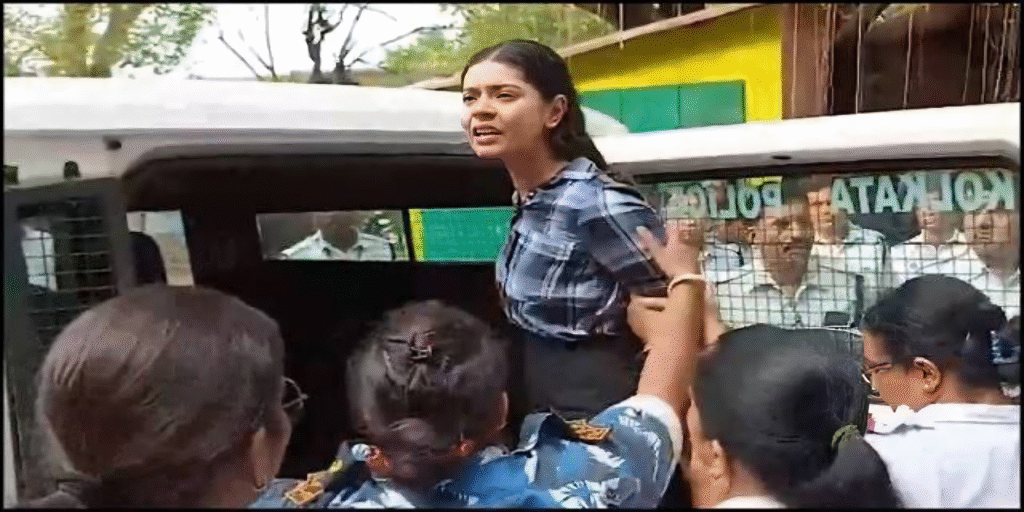Updated July 21, 2025 – Election Commission | Voter ID | Special Intensive Revision | Opposition Response | Monsoon Session.

Why Bihar’s Voter Rolls Make Headlines
As Bihar gears up for its fiercely contested Assembly elections later this year, an event with deep democratic importance has taken centre stage: the Special Intensive Revision (SIR) of the state’s electoral rolls. Launched by the Election Commission of India (ECI), this massive exercise marks the first state‑level overhaul since 2003. Its stated aim is to ensure clean voter lists — but it has triggered heated debate, legal challenges and political uproar.
This blog explores every facet of the controversy — from its background and scale to the reactions it’s provoked, the legal battles looming, and how this issue has sparked turbulence in Parliament’s monsoon session. I’ve drawn on data released by the ECI, government press notes, court filings, parliamentary reports, journalistic investigations, and official documents. Sources are linked directly so you can verify every fact yourself.
Background: What Is the Special Intensive Revision (SIR)?
1 The Purpose Behind SIR
Ahead of the 2025 Bihar Assembly elections, the ECI launched a Special Intensive Revision of the state’s electoral rolls. This process involves a door‑to‑door verification drive conducted by Booth Level Officers (BLOs) working in conjunction with Booth Level Agents (BLAs) from political parties. The stated objectives are threefold:
Enroll every eligible voter who may have been missed in previous updates. Remove ineligible or deceased voters from the rolls. Eliminate absentee or migrated voters, such as those who have moved out permanently or temporarily left the state.
2 Why It Matters for Bihar
With approximately 8 crore registered voters in Bihar, a clean and accurate electoral roll is critical. Even a minor 1 percent error rate translates into 8 lakh questionable entries. The removal of 35.5 lakh voters reportedly includes duplicates, foreigners, deceased persons and long-term migrants. Critics warn that if these removals are unevenly distributed among constituencies, it may unduly influence electoral outcomes.
3 Why Now?
This will be Bihar’s first state‑specific intensive revision since the 2003 voter list update. Usually, extensive roll revisions are done as part of scheduled, nationwide “rolling revisions.” Doing this in isolation has made opposition parties skeptical. Draft revision rolls are due for public release on August 1, 2025, with a deadline for objections set on August 30.
The Controversy: Opposition Allegations from the Ground
1 Unfair Targeting of the Poor and Marginalised
Opposition parties including the Congress and RJD argue that the exercise may disproportionately disenfranchise poor, rural or migrant voters who lack proper documentation. They point out:
(A) Many families struggle to access birth certificates, school records, utility bills or updated IDs. (B) Requiring such documents in a tight time window disadvantages the poorest segments.
2 Confusing Timelines and Document Requirements
Complaints have emerged about inconsistent directions from the ECI. Initially, only certain IDs like passports or voter cards were accepted. Later, Aadhaar and ration cards were acknowledged, adding to public confusion.
Some communities received notice of verification only a few hours in advance, giving them minimal time to gather documents. The opposition points out that this rushed process increases the risk of errors and arbitrary exclusions
3 Why Only Bihar?
While intensive audits are not inherently unusual, doing a state‑focused exercise — rather than a national drive — seemed selective. Critics have questioned whether the timing and singling out of Bihar suggests an ulterior motive, especially with the Assembly polls looming.
4 Aadhaar and Ration Card Controversy
Widespread public concerns have surfaced over the ECI’s fluctuation over whether Aadhaar cards, ration cards, and parental KYC would be accepted. This debate is especially relevant in Bihar, where migration is high and many people rely on these documents.
Legal Pushback: Supreme Court Case and Interim Orders
1 The Court Petition
A coalition—including the Association for Democratic Reforms and several opposition parties—has petitioned the Supreme Court. They argue that:
(A) The SIR is arbitrary and lacks procedural fairness. (B) Many eligible voters stand at risk of incorrect removal. (C) The process lacks adequate fairness and transparency safeguards.
2 What the Petition Seeks
Petitioners are asking the Court to:
Stay the publication of the draft rolls that are to come out on August 1. Direct the ECI to issue clearer instructions, extend deadlines, and ensure every inquiry has a transparent review mechanism. The next hearing is scheduled for July 28, 2025 — one week before the draft rolls are officially released.
ECI’s Defence: Legal, Technical, and Procedural Justification
1 Legal Authority and Constitutional Basis
ECI officials have clarified that the SIR is carried out under constitutional and statutory laws governing electoral rolls (Representation of the People Act, 1950 and 1951). They emphasize that such revisions are standard practice when significant discrepancies are detected.
2 Transparency and Inclusive Documentation
The ECI maintains that: Multiple documents are accepted, including passports, ration cards, Aadhaar, birth certificates, bank statements, etc. Revamped outreach efforts — via posters, advertisements, awareness programs, camps in urban centres and migrant-heavy areas — have been ramped up to keep people informed.
3 Complaint Redress and Extension Window
The ECI has promised corrective mechanisms. Voters can register their objections, apply for additions or corrections, and escalate unresolved cases — all before the final roll is published after August 30, 2025. This window aims to address errors or legitimate omissions.
Scale and Stakes: How Many Voters Are Affected?
1. Over 8 Crore Voters Involved
The SIR covers more than 80 million voters in Bihar, spread across 243 Assembly constituencies and 40,000+ booths. The scale is enormous; any minor flaws could affect hundreds of thousands of voters.
2 Potential Removals and Their Impact
Recent reports suggest nearly 35.5 lakh names marked for removal for reasons like duplicates, deaths, long absences, or unverified identities — around 4.5 percent of total electors. Some State Election Commission data indicate that removals could cross 5 percent in certain constituencies. Opposition voices warn that even a 1 percent change per constituency is significant in closely fought seats, where margins of victory often range from 2,000 to 5,000 votes.
3 Special Focus on Urban and Migrant Populations
The ECI has said it will deploy extra civic camps in cities and return visits to meet migrants at workplaces, bus stops and construction sites. Yet critics say these efforts remain insufficient, especially for seasonal or internal migrants.
Confusion in Communication: How Mixed Messaging Undermines the Process
1 Changing Document Lists
Variations between press notes, public notices, and press interviews have created uncertainty: One notification listed only passports, driving licenses, birth certificates; then Aadhaar and ration cards were suddenly accepted. Booth staff reportedly expressed contradictory guidance to voters.
2 Needy Marginalised Communities Left Guessing
People in remote areas have shared anecdotes of being told “bring a birth certificate,” only to be later told a ration card suffices. Those lacking both were at risk of exclusion. Opposition parties argue that this patchwork implementation increases the possibility of administrative error and deliberate exclusion.
Parliamentary Uproar: Monsoon Session Day One
1 Politically Charged Start – July 21, 2025
The first day of the Monsoon Session — July 21 — saw both Lok Sabha and Rajya Sabha adjourned early due to nonstop sloganeering. Opposition MPs demanded urgent discussion on the Bihar SIR, the Pahalgam terror attack, Operation Sindoor, and other pressing issues.
2 Opposition’s Demand to Halt the Roll Launch
Members across parties tabled notices for suspension of business to debate the SIR issue. The vocal exchanges pointed to growing concern over democratic fairness in Bihar’s electoral process.
3 Government’s Response and Stormy Session Ahead
While the government expressed openness to discussing parliamentary references, no official steps were taken on the floor. With around 21 sittings scheduled between July 21 and August 21 — barring the August 12–18 Recess — the atmosphere promises to remain charged.
Wider Implications: Legal, Political, Electoral
1. Democracy Vs. Accountability
At its core, this controversy pits two fundamental democratic values: Accurate electoral rolls—essential for a free and fair election. Inclusive access to these rolls—critical so eligible citizens are not denied their franchise.
2. Legal Precedents
If the Supreme Court halts the draft publication or demands ECI make changes, it will set a benchmark for how far electoral authorities can go in pruning rolls without triggering disenfranchisement.
3. Poll Strategy and Electoral Margins
Political observers note that even short‑shift in a few hundred voters per constituency can tip the scales in marginal seats. Margins in Bihar often hover around 2–5 thousand votes, especially in rural and marginalized communities.
4. Impact on Future Elections
If a Supreme Court order delays the final publication, the Bihar roll update may no longer serve as blueprint for future state‑specific revisions. Instead, future changes may revert to national rolling revisions — seen as more consistent and fair.
What Happens Next? Key Dates & Anticipated Outcomes
Date Event
July 21, 2025 Monsoon Session begins amid uproar
July 28, 2025 Supreme Court hearing on legal petition
August 1, 2025 Draft electoral rolls released
August 1–30, 2025 Window for objections, additions, corrections
August 30, 2025 Deadline to file protests before final roll publication
August 31, 2025 Publication of final, revised electoral roll
October–November 2025 Probable Assembly elections in Bihar
Official Sources & Data You Can Trust
ECI’s Press Information Bureau release (June 2025) confirms over 95.9% coverage by BLOs and outlines extra measures in SIR
ECI website, including downloadable SIR data as of July 1, 2025
Supreme Court case filings challenge the SIR and request hearings before draft publication
PRS India monsoon session documents set out parliamentary agenda dates and sittings
Media reports from NDTV, India Today, Al Jazeera, The Wire, etc., capture local impact and broader coverage with first‑hand observer interviews
Final Perspective: Why This Matters
Voter list accuracy is the bedrock of democracy.
Yet greater precision must never come at the cost of disenfranchising needy or marginalized groups. If the ECI succeeds in balancing robust voter verification with procedural fairness and outreach, SIR may strengthen electoral integrity.
But rushed timelines, inconsistent instructions, or errors might overshadow the objective and undermine public trust.
As Bihar heads into the 2025 Assembly elections, this voter‐roll drama has become emblematic of deeper questions: Whose votes count? Who ensures accuracy without exclusion? And how do electoral institutions reconcile competing democratic values?
The next few weeks—Supreme Court hearings on July 28, draft roll publication on August 1, and the objection window running till August 30—will shape not only Bihar’s electoral outcome, but also the legal and procedural landscape of voter list revision in India for years to come.
Further Reading & Original Sources
1. Challenge to ECI’s Revision of Electoral Rolls – Supreme Court Petition Files
2. ECI Press Release on 95.92% Elector Coverage under SIR
3. Coverage by India Today on ECI rebuttal to Opposition
4. Al Jazeera: Deep Dive on Voter Verification Concerns
5. The Wire: Scrutiny of conflicting ECI notices
6. NDTV: Data on 35.5 lakh removals from rolls
7. PRS Parliament Session Alert
8. Official list of Monsoon Session details from NewsOnAir
9. Press note on Monsoon Session attendance details
10. NDTV Live: Reports of uproar, adjournments, and demands
11. Hindustan Times: Details on opposition protests in both Houses
12. Bloomberg coverage of parliamentary uproar over voter rolls
For direct access to roll‑revision data, visit the Election Commission of India portal (Electoral Roll section) and the Chief Electoral Officer, Bihar website




